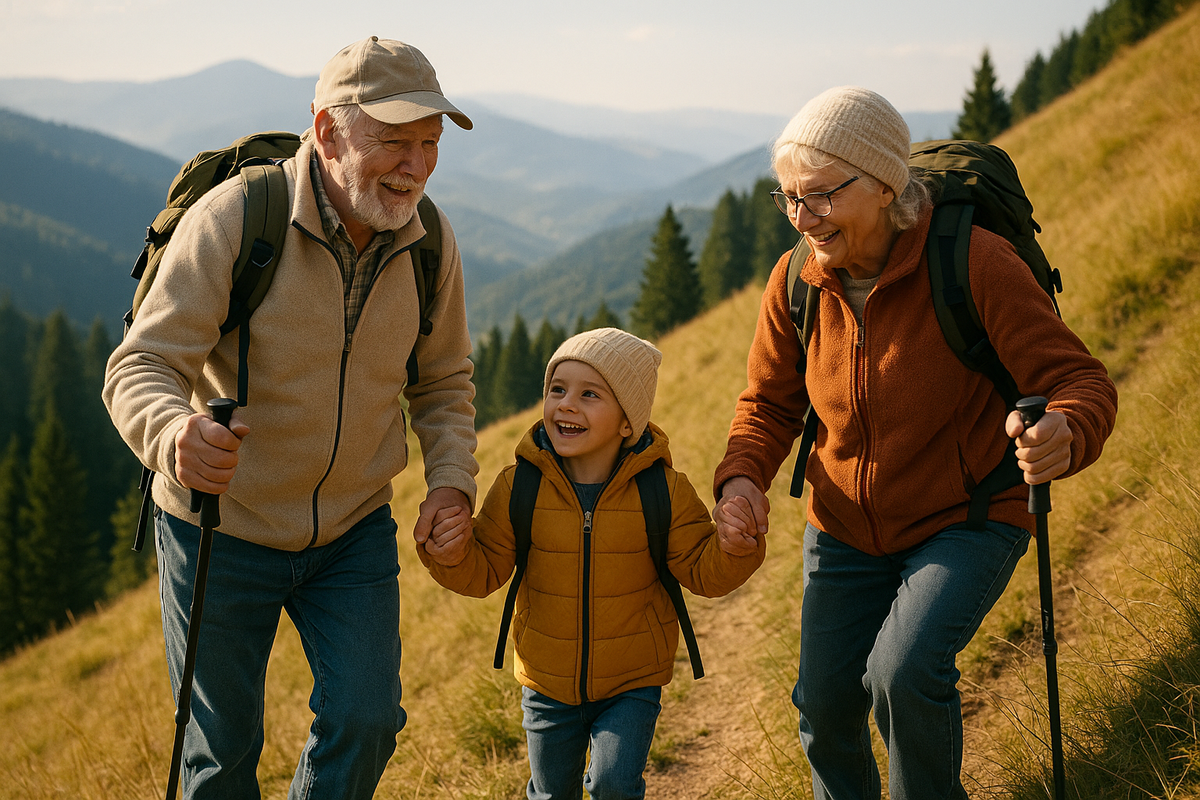Supporting Physical Growth and Healthy Bodies Through Play

The Early Childhood developmental stage, from birth to age 8, is packed with wonder, wobbles, and wiggles. This stage is where big leaps in physical growth happen. Little muscles grow stronger, coordination improves, and children gain confidence moving through the world.
And guess what helps most? Play.
Physical development is not just about growing taller. It’s also about learning how to move with purpose. Gross motor skills (like crawling, walking, and jumping) and fine motor skills (like grasping, drawing, and buttoning) grow stronger through hands-on, active play.
Why Movement Matters More Than You Think
Physical play is not just fun, it is foundational. It is one of the five essential domains of holistic development in early childhood, alongside cognitive, social-emotional, language, and adaptive skills. When your child moves, they are not just building muscles, they are learning, problem-solving, expressing emotion, and building independence. Physical activities assist in the pathway to whole-child growth.
Research shows that physical play is tied to brain development and school success. One study found that better motor skills in early childhood predicted stronger academic performance later on1. That means every reach, roll, and hop matters—now and down the road.
Babies are wired to move. Even tiny stretches and wiggles lay the foundation for lifelong movement.
Play Ideas:
· Gently massage your baby after bath time, moving their arms and legs.
· Hold and rock with them
· Give them floor time with safe objects to reach for and explore.
These little movements help build strength and coordination from the very beginning.
Toddlers (1–3 years): Movers and Explorers
Now the fun begins! Toddlers are on the move—walking, climbing, and exploring the world like little adventurers.
Play Ideas:
· Push and Pull Toys: Use sturdy toys like baby shopping carts or toy wagons to encourage walking and balance.
· Soft Climbing Structures: Climbing over couch cushions, foam blocks, or small indoor slides helps build leg strength and coordination
· Chasing Bubbles: Blowing and chasing bubbles promotes running, jumping, and reaching. It’s also great for visual tracking.
· Kicking and Rolling Balls: Toddlers can start by rolling a large soft ball back and forth, progressing to gentle kicks as balance improves
· Stacking Cups or Blocks: Building towers with soft blocks or stacking cups develops hand control, coordination, and spatial awareness.
· Simple Art Activities: Let toddlers scribble with jumbo crayons or finger paint. These activities help them explore textures and control
· Feeding Themselves: Allowing children to use spoons, forks, or even their hands during meals promotes independence and dexterity.
· Water Play: Let them splash in a shallow bin with cups and spoons.
· Sandbox Play: Digging and pouring with scoops or hands engages tactile and motor skills.
Helping with Chores: Simple tasks like putting laundry in a basket or wiping a table encourage A study found that children with stronger early motor skills were more active and confident as they grew2.
Preschoolers (3–5 years): Gaining Control
Play Ideas:
· Animal Walks: Ask them to hop like a frog, waddle like a duck, or stomp like an elephant. This builds coordination and balance
· Playing with Balls: Kicking, throwing, and catching a ball improves hand-eye coordination, balance, and body awareness. Start with larger balls and gradually move to smaller ones.
· Ride-on Toys or Tricycles: Riding tricycles, scooters, or ride-on toys builds leg strength, balance, and confidence.
· Playdough Play: Rolling, pinching, and shaping playdough strengthens finger muscles and supports creativity.
· Drawing and coloring: Develops fine motor control and creativity
· Cutting with Safety Scissors: Encourage them to snip along lines, shapes, or create confetti
· Pouring water between cups: Builds control and coordination.
· Helping with cooking: Stirring batter, tearing lettuce, or kneading dough promotes strength and dexterity
This is the age when fine and gross motor skills take off, and playful opportunities help them soar.
Early School Age (6–8 years): Skills and Confidence
At this age, children are mastering skills and developing confidence in what their bodies can do. They love games, sports, and challenges that help them feel capable.
Play Ideas:
· Ride bikes or scooters together.
· Play tag or set up mini relay races.
· Try sports like soccer, martial arts, or swimming.
· Craft with scissors, folding paper, or tying shoelaces.
The focus here? Encouragement over perfection. Skill-building through play supports both muscles and mindset.
END
Movement is joy. Physical development helps children stay healthy, explore the world, and build confidence.
By providing time for both free play, structured activities, and family adventures, you are giving your child the building blocks for lifelong wellness.
Try This: Quick Parent Reflection Quiz
Can you tell which motor skills your child is using? Try this short activity:
1. Your 10-month-old grabs a rattle during tummy time.
Answer: Both (fine for grasping, gross for posture)
2. Your 2-year-old jumps off the couch.
Answer: Gross motor
3. Your 4-year-old strings large beads.
Answer: Fine motor
4. Your 6-year-old rides a scooter.
Answer: Gross motor
5. Your 3-year-old rolls and pinches playdough.
Answer: Fine motor
6. Your 7-year-old ties their shoelaces.
Answer: Fine motor (with some gross motor stability
Footnotes